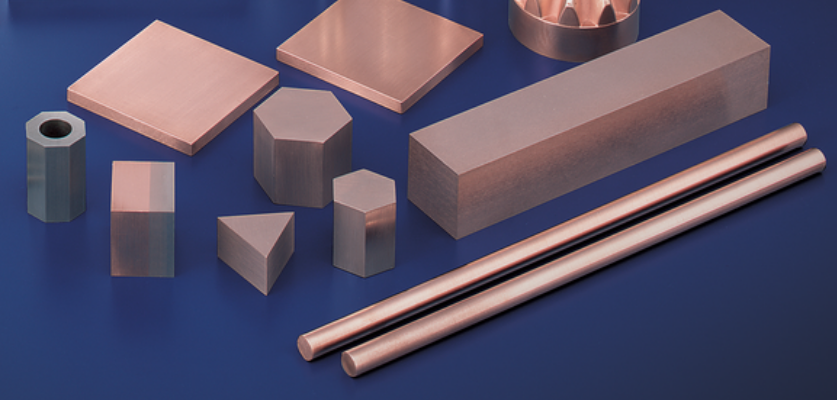Why Use Copper Tungsten for Machining Electrodes?
While each machine shop will have its own set of best practices, copper tungsten generally has the machining and grinding characteristics of hard gray cast iron. However, the machining characteristics will vary depending on the composition of the copper tungsten.
In fact, material composition greatly influences performance in multiple ways. Interestingly, while both copper and tungsten in their pure forms can pose significant machining and manufacturability challenges, those difficulties are overcome when the two materials are combined.
That helps to make copper tungsten electrodes a great choice for electrical discharge machining (EDM) of carbides and for resistance spot welding.
Avoiding Machining Issues with Copper Tungsten
In discussing the benefits of copper tungsten, we’ve focused on unique material properties and their effects on production performance. These properties include:
- Improved wear resistance
- DC arc resistance
- Increased thermal conductivity
Along with the composition of the material, each of these factors play a unique role in the success of copper tungsten’s performance. Yet, none of them matter much if the material is impossible or costly to manufacture.
Pure copper becomes nightmarishly gummy when ground or machined, and is notorious for producing burrs. In fact, the cost of deburring a copper electrode can supersede the cost of manufacturing it.
Tungsten, on the other hand, is brittle, and its density makes it difficult to machine. The results are high tool wear rates and increased production times.
Not surprisingly, though, by combining copper with tungsten, manufacturability is improved to an impressive degree. The addition of tungsten to copper eliminates the burr issues of copper. Conversely, copper reduces the tool stress relative to tungsten machining.
Powder Metallurgy Process Improves Production
We discuss elsewhere how the powder metallurgy process that creates the copper tungsten “pseudo-alloy” can be manipulated to improve performance. In addition, that process of pressing, sintering, and infiltrating is constantly being reimagined to produce a denser, more stable product that makes for predictable manufacturing outcomes.
For extremely complex or detailed electrode geometries, the tungsten powder can be poured directly into a mold and then sintered with the copper. That provides greater flexibility for a range of electrode manufacturing requirements.
To learn more about the advantages of copper tungsten and why you might choose it as a material for resistance welding electrodes, download our free white paper.






